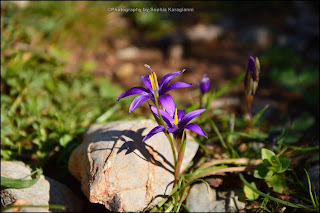OUR LADY OF CHAROS IN LIPSI
Our Lady of Charos is located in my beloved Lipsi, a Byzantine chapel built in 1600 by monks from Patmos. It was named “Panagia tou Charou” (“Our Lady of Death/Charos”) because of the relic it houses: an icon of the Virgin Mary not holding Christ in her arms as is customary, but the Cross with Jesus upon it. It is a unique depiction that shows the mourning of the mother and the torment she endured, receiving her child dead after an unbelievably harsh and dishonorable martyrdom.
THE MIRACLE OF THE LILIES THAT BLOOM
According to testimonies, in April 1943 a young girl placed white lilies before the icon of the Virgin Mary as an offering. No one knows what she asked of the Virgin. As the days passed, the lilies naturally withered. Three months later, in July 1943, some visitors noticed that the withered lilies had begun to turn green again and essentially come back to life. On August 23, when this church celebrates its feast, the lilies bore new buds. People who visit the small chapel of the Virgin to venerate and admire this unique icon say that this miracle is repeated every year during the same period.
The blossoming lilies on the icon of the Virgin are placed fresh each year on March 25, the Feast of the Annunciation. Gradually, the lilies dry out and then bloom again a few days before the Enniamera tis Panagias (the nine-day commemoration of the Dormition of the Virgin).
The celebration begins on the eve, August 22, from the island’s cathedral, which was rebuilt in 1931 at the expense of the Lipsian Brotherhood of America. The procession of the icon of Our Lady of Charos, adorned with the blossoming lilies, begins in the afternoon around six o’clock. Leading the procession is the marching band, followed by the icon of Our Lady of Charos with the blooming lilies, the clergy, the mayor of Lipsi, members of the municipal council, and other officials.
A festive vespers service is held there. The procession covers on foot about 1,800 meters until it reaches the church of Our Lady of Charos. The feast continues with a festival at the seaside taverns of the island, many of which host live music, and the revelry lasts until morning.


























































